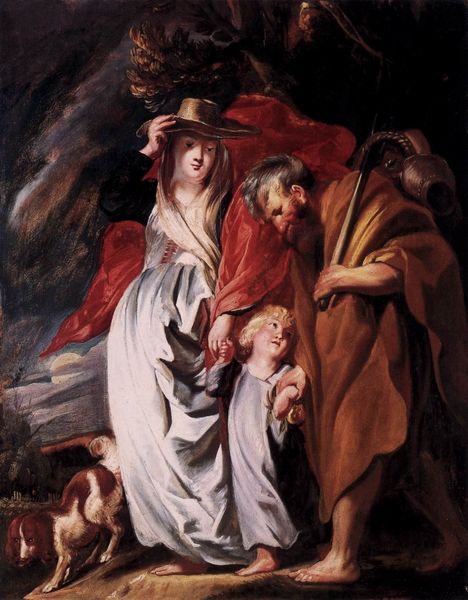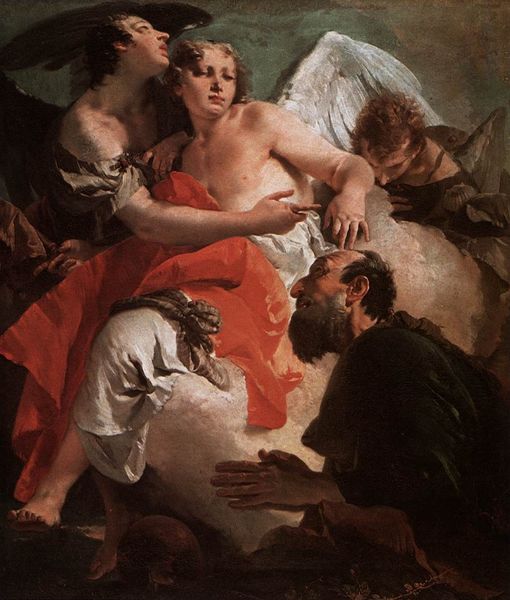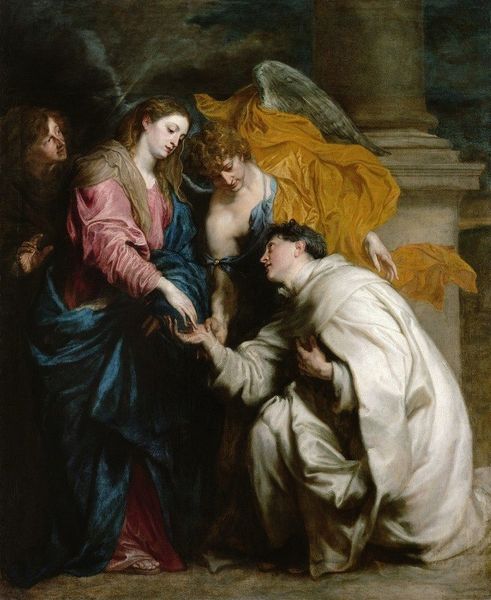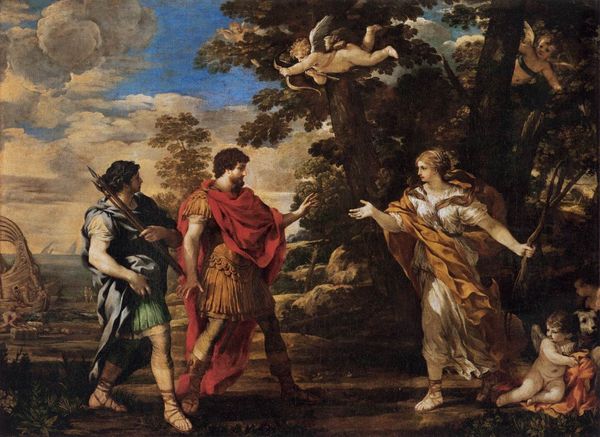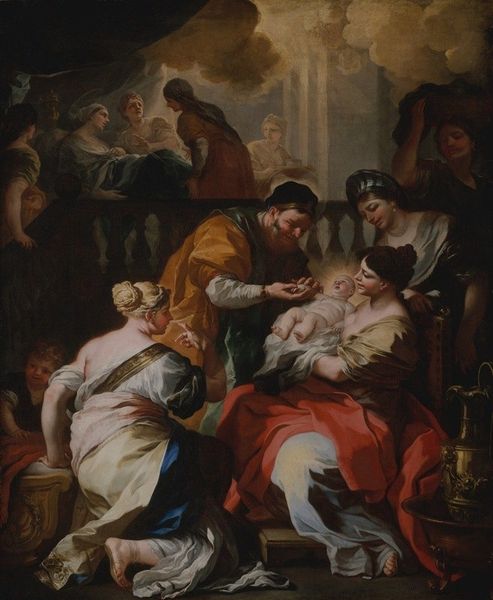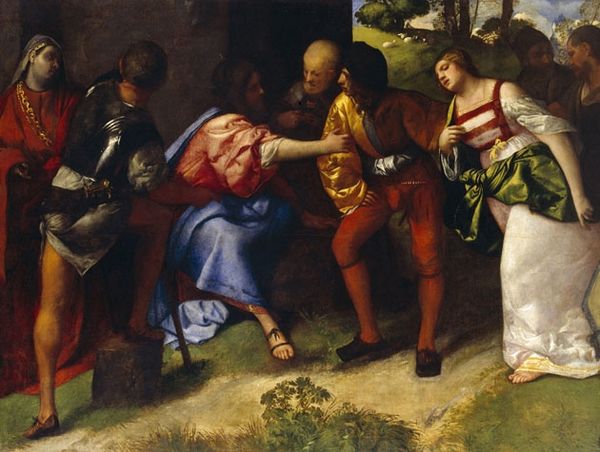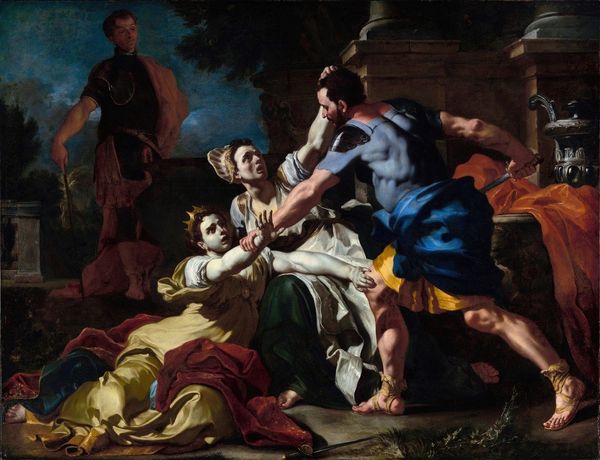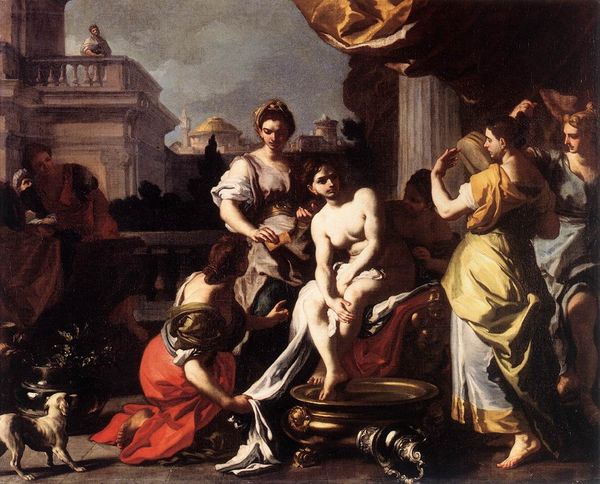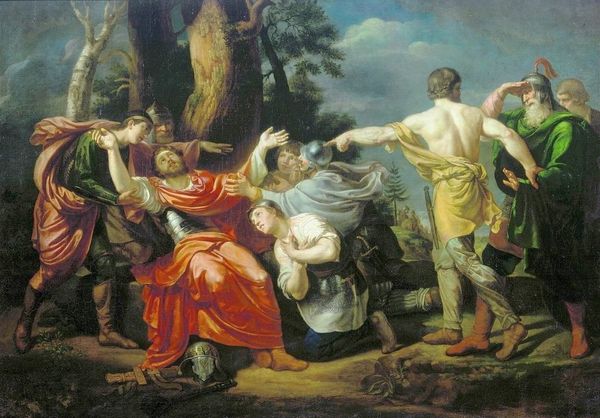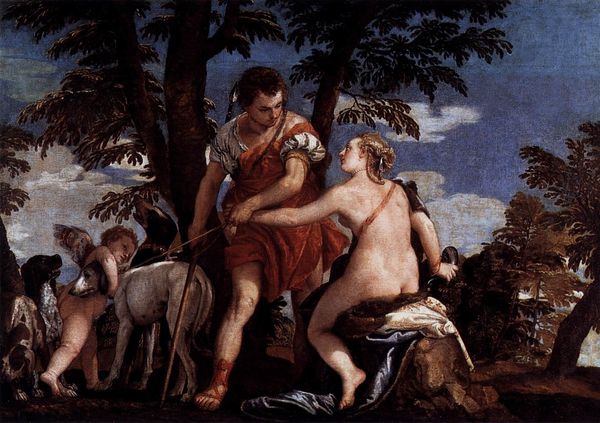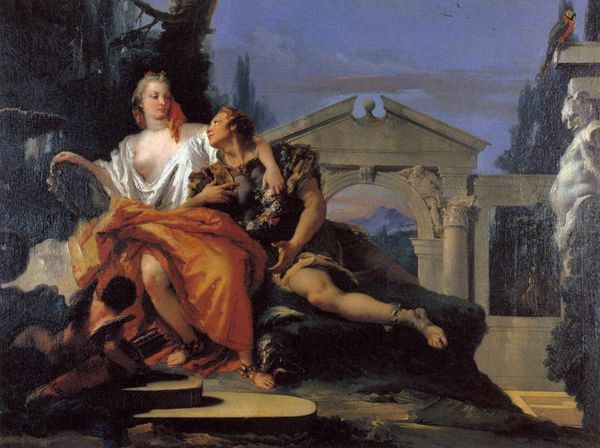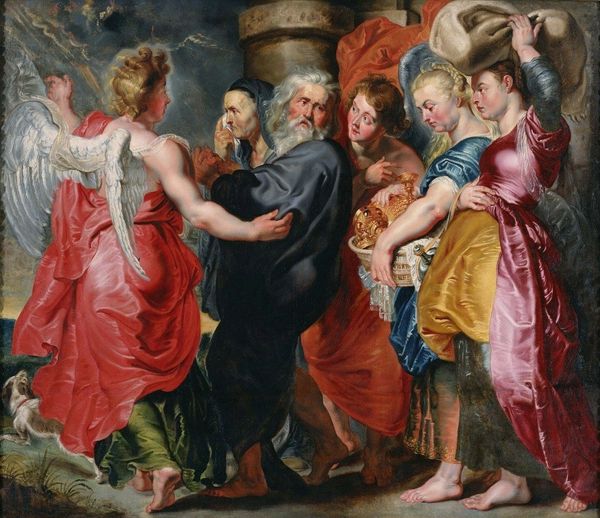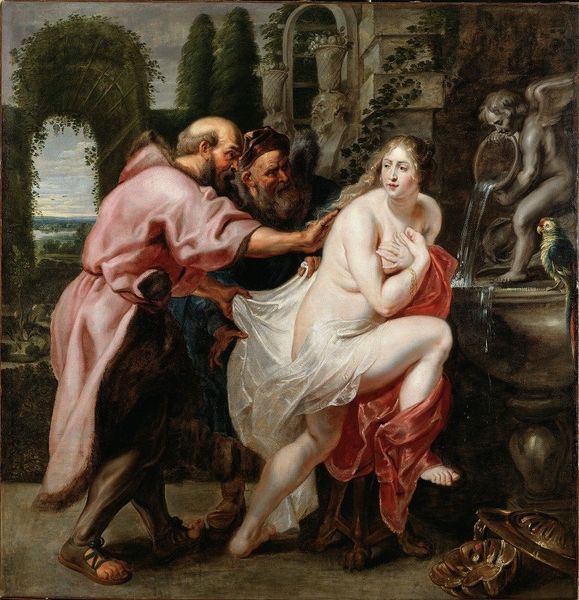
oil-paint
#
portrait
#
allegories
#
allegory
#
symbol
#
oil-paint
#
mannerism
#
figuration
#
oil painting
#
mythology
#
history-painting
#
italian-renaissance
#
portrait art
Dimensions: 219 x 170 cm
Copyright: Public domain
Curator: Immediately, the twisting figures caught my eye, so characteristic of Mannerism, don't you think? The compressed space, the heightened colors—it’s all so…urgent. Editor: It is undeniably arresting. Let's unpack some of the layers. Paolo Veronese completed "Honor and power after the death of flourishes" around 1567 using oil paints, as a history painting rich with allegory and symbolism. Note the man, caught between two women in a landscape filled with subtle details. Curator: That central male figure is practically a pawn, isn't he? Look at how these figures exert influence on his direction. This reads as an allegory of choices, and perhaps constraints. There is also something troubling about the representation of women; their roles seem tied to specific interpretations of power dynamics. I see the tensions of courtly life in 16th century Italy written all over this. Editor: True. But observe the exquisite use of color. Veronese’s color choices really create the visual drama that elevates the subject above mere narrative, don't you agree? It almost has its own voice. Note, in particular, the sharp contrast between the muted earth tones of the garden scene versus the luxurious, saturated fabric of the women's dresses. Semiotics tell me there is so much emphasis on surfaces here. Curator: Color acts like the score of this morality play, I agree, but think also about Veronese and his other allegorical paintings: How did his patron networks influence his style? We have to see it within the frame of patronage, class structures, and prescribed gender roles. Also the female form portrayed here is not the Renaissance ideal, this makes me think about Veronese as an artists making conscious commentary of norms of the day. Editor: Perhaps. But what fascinates me is how these allegories utilize idealized figures that transcend time through the interplay of shapes, colours, and brushstrokes. Veronese created not only a representation of power, but an aesthetic and sensorial experience which resonates even centuries later. Curator: Which perhaps helps us to challenge norms around representations of virtue. Very interesting indeed. Editor: Agreed.
Comments
No comments
Be the first to comment and join the conversation on the ultimate creative platform.
